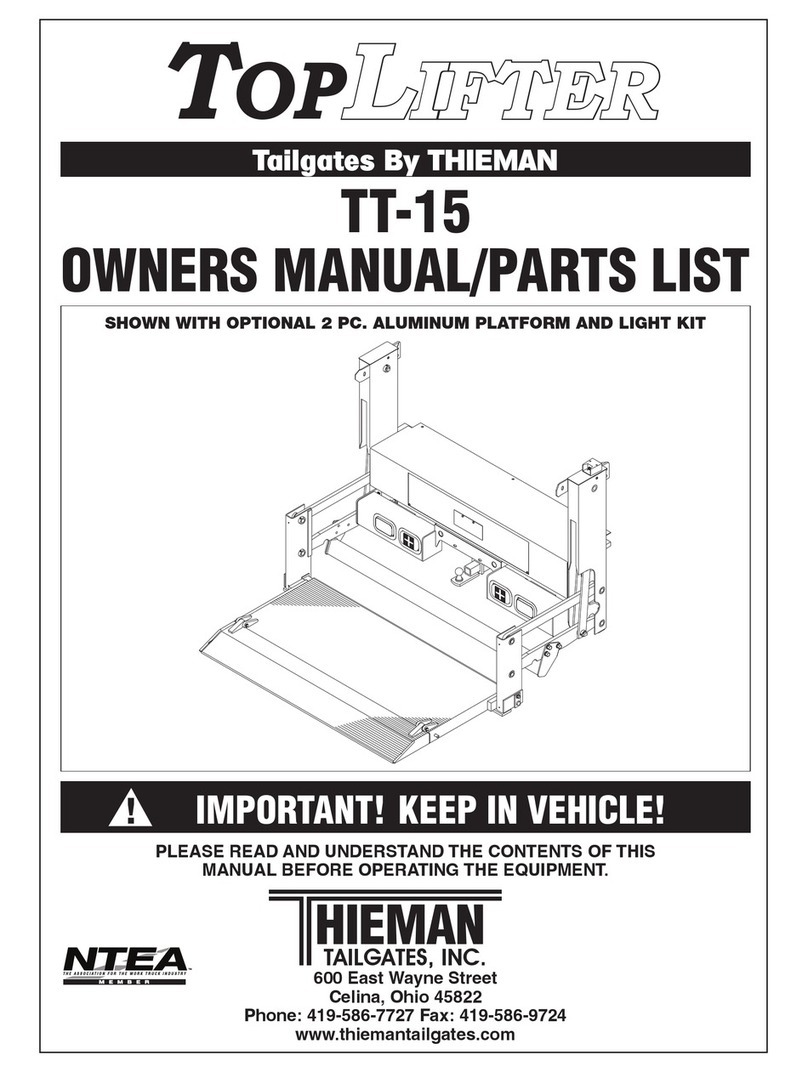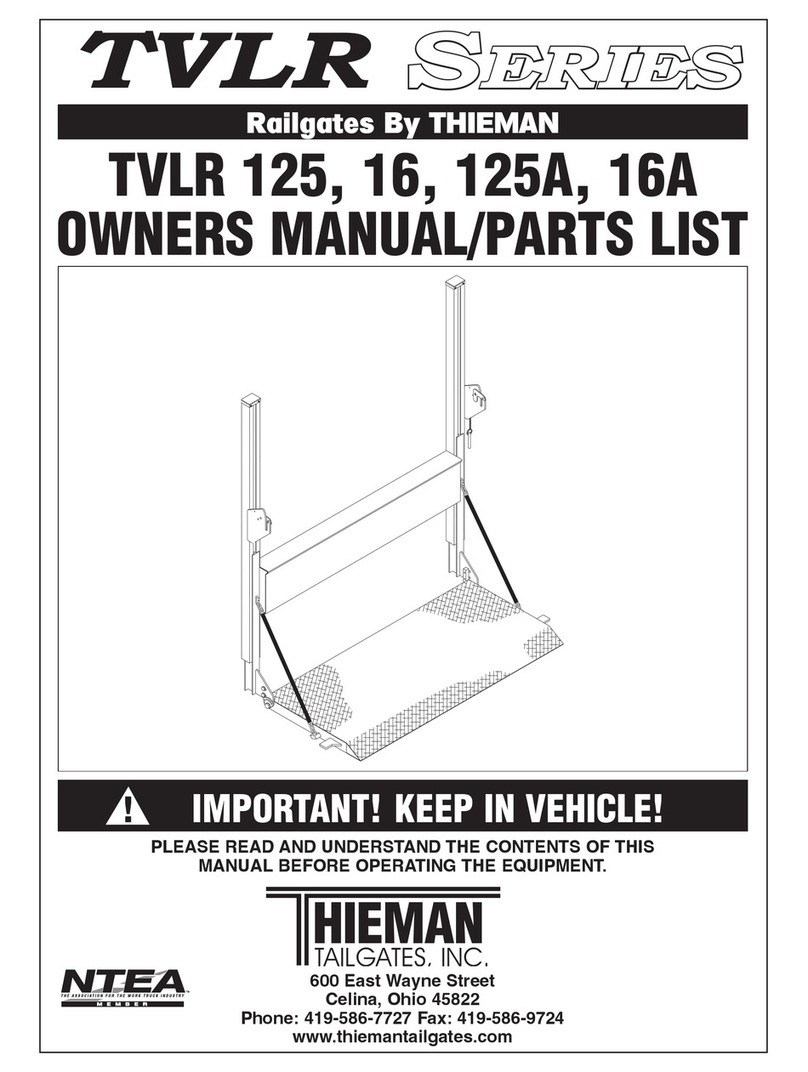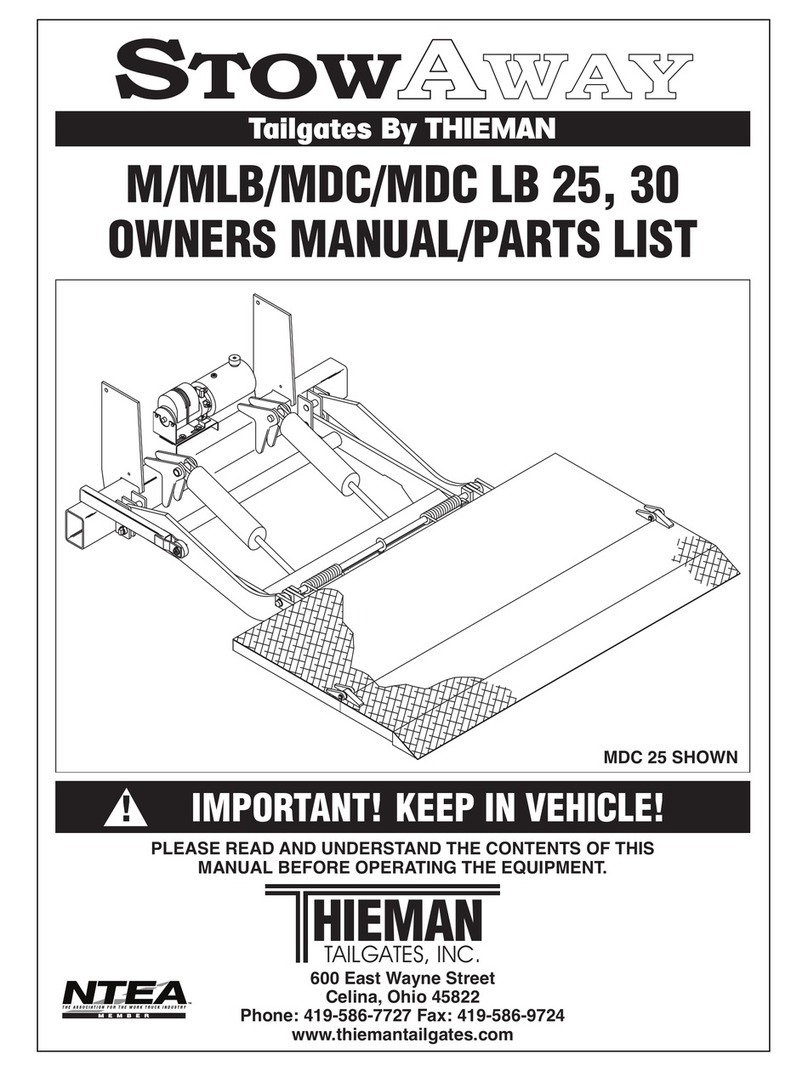
5.
8. DO NOT use this liftgate to load or unload cargo from any elevated surface such as a
dock, sidewalk, raised concrete slab, etc. A truck’s suspension WILL squat under load,
and may cause loads to become unstable. Also, this effectively changes the “bed height”
of the truck, so the liftgate may not function properly on an elevated surface and may bind
and damage the liftgate. Additionally, if the ENTIRE liftgate platform is not supported by
the elevated surface, this partially supported condition WILL create unintended loads on
the liftgate components and MAY LEAD TO A SUDDEN LIFTGATE FAILURE.
9. DO NOT OVERLOAD THE LIFTGATE. Each liftgate has a specific maximum capacity for
lifting and lowering. The standard maximum rated capacity of the LRST40 series liftgates is
4,000 lbs.
WARNING note:Special options can lower the maximum rated capacities below
those shown above. Be certain you know what the maximum rated capacity is for your
particular liftgate.
10. NEVER off-center the load on the platform, from side to side or away from truck as this
may overload the liftgate. The center of weight of the load should NEVER be placed
beyond the center of the platform load surface, away from truck. Loads should be placed
close to platform edge nearest truck. See figure 1.
WARNING note: On the LRST model liftgate, off-center loading away from the truck
may cause the nose of the platform to tilt downward severely when lowering from
the truck bed level, greatly increasing the risks of falling loads. PAY ATTENTION
when lowering loads, to ensure the platform is staying level. If the platform begins
to tilt downward while lowering and before reaching ground, STOP LOWERING
IMMEDIATELY. Raise the load back to bed level so the load can be centered properly.
If this problem continues while lowering with the load properly centered, raise the load
back to truck bed level and place the load back into the truck. Stop using the liftgate and
contact the proper maintenance personnel, as stiff pivots on the liftgate can contribute to
this condition. DO NOT operate this liftgate, if this condition exists.
11. NEVER allow any part of the load to extend beyond the edges of the platform’s flat load
surface. Overhanging objects increase the risks of tipping loads due to unstable loading
or snagging these objects on surroundings and THESE OBJECTS COULD ALSO STRIKE
OR CRUSH OPERATORS OR BYSTANDERS.
12. NEVER lift or lower unstable loads.
13. NEVER operate liftgate if platform load surface is slippery.
14. Make certain the areas above and below the liftgate platform and other moving liftgate
parts, are clear before, and at all times during, operation of the liftgate. Do NOT allow
anyone to stand around the platform where a falling load could land on them.
15. Load and unload the platform from the rear and not from the side of the platform.
16. Never operate lift trucks on or over any part of the platform.
(Warnings continued on following pages)































